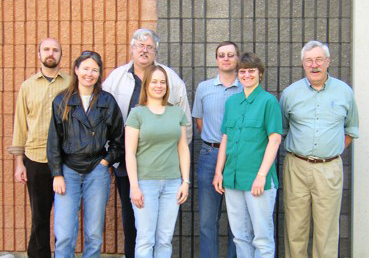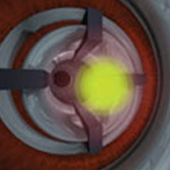
Two superheavy elements, elements 113 and 115, were recently synthesized through a collaborative effort between scientists from the Physical and Life Sciences Directorate at the Lawrence Livermore National Laboratory and researchers from the Joint Institute for Nuclear Research at the Flerov Laboratory for Nuclear Reactions in Dubna, Russia. Two isotopes of element 115 survived 30-80 milliseconds before decaying into isotopes of element 113 that survived approximately ten times longer prior to decaying themselves. Following a series of alpha-decays, the element 115 atoms decayed into long-lived isotopes (multiple hours) of element 105 (Db). The great-great-great granddaughter Db isotopes were also chemically identified in subsequent experiments.
About Superheavy Elements
Background information
When will elements 113 and 115 be named?
1. When will elements 113 and 115 be named?
We don't know when the elements will be named. The naming of new elements is a long process governed by the International Union of Pure and Applied Chemistry (IUPAC). Any discovery of new elements must first be confirmed by an independent laboratory and established beyond a reasonable doubt. Afterwards, the research team that discovered the element is asked to propose a name and symbol for the element. The proposed name is then reviewed by a panel of experts and, if all goes well, finally approved by the IUPAC. This naming process can take many years. For example, element 110 was discovered in 1995 and received its name, darmstadtium (Ds), in 2003, while element 106 was discovered in 1974 but was not officially named as seaborgium (Sg) until 1997. Until elements 113 and 115 receive their official names, they will be known by their temporary IUPAC names: ununtrium (Uut) for element 113 and ununpentium (Uup) for element 115.
Related Web Pages
- Livermorium
- Discovery of Elements 113-118
- Discovery of Elements 114 and 116
- Livermore Scientists Team with Russia to Discover Element 118
Contact: Dawn Shaughnessy [bio], shaughnessy2 [at] llnl.gov (shaughnessy2[at]llnl[dot]gov)





